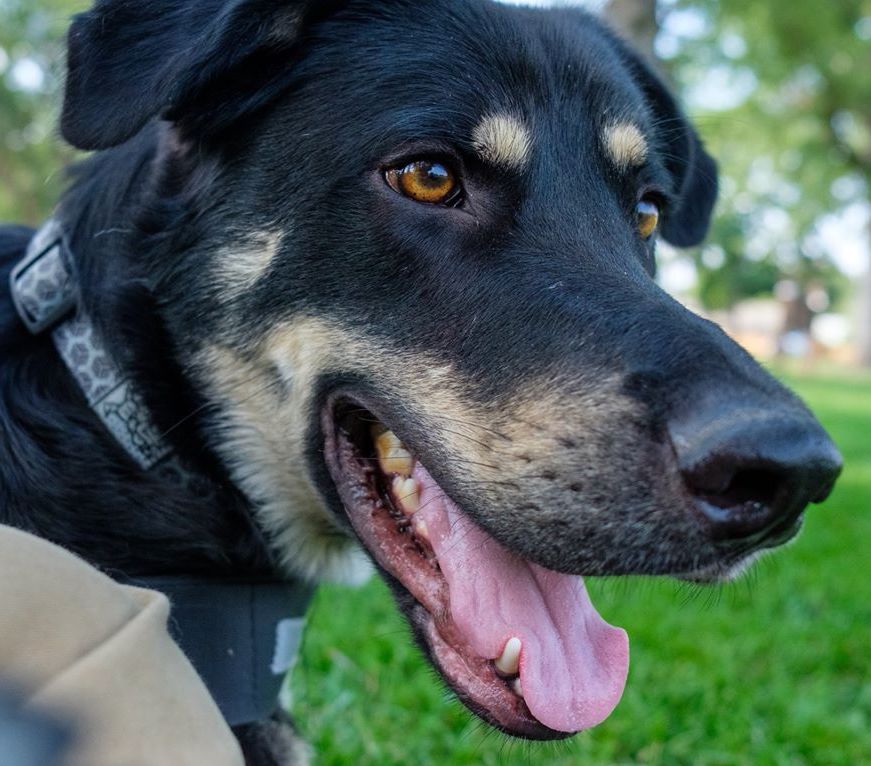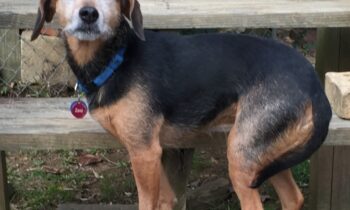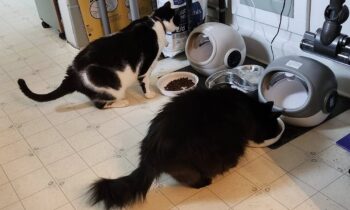
For the last few weeks, we’ve been hearing from animal professionals, now working in their chosen fields, about how some very important persons influenced their vocations with gentle guidance, encouraging support, and enlightening educational opportunities—which they accepted eagerly.
Those important persons were mentors. How did they meet? We asked to hear the stories.
Karen Reardon Taylor (California) I’m grateful for so many mentors, both two- and four-footed! Got my first dog-training book when I was seven from the local hardware store. It was written by John Kellogg. Beverly Luecke was a local trainer who inspired me to do more. I watched Barbara Woodhouse on TV. Years later, I got involved in Society of North American Dog Trainers and met Robin Kovary. She helped guide me on what to read to get more knowledge. That group morphed into the Association of Professional Dog Trainers (APDT) with Ian Dunbar, Terry Ryan, the late John Fisher, Bob Bailey, Gail Fisher, Karen Pryor, Gary Wilkes, Bill Campbell, Martin Deeley, and John Rogerson. All played a huge part in my choosing to leave my day job back in the ’90s! I thank each and every one of them for sharing their wisdom, knowledge, and all the laughs! Some trainers who are not positive-reinforcement–based inspired me, too, and taught me priceless lessons about dog training that I will never forget, helping to shape who I am as a dog trainer. We need to have knowledge from many sources to fully understand the scope of what we do. Without knowing what I didn’t align with, I never would have known what I did.
Nina Bondarenko (United Kingdom) Yes. That APDT group was inspiring for me as well. Also Major Hulse in Australia for his booklet in the ’70s on training German shepherd puppies to detect mines, and sharing his knowledge with ignorant young me! And Joy Belles for teaching me to respect each dog as an individual. Colette Kase in the U.K. for generously and enthusiastically sharing so much behavior knowledge and insights. The late Roy Hunter for teaching me how important nose work is for all dogs. So many wonderful people who generously shared knowledge.

Photo by Steven Cogswell
Don Hanson (Maine) There have been many, but four really stand out the most; Turid Rugaas, who gently helped me understand patience, as well as the importance and beauty of being quiet and just watching dogs. Carolyn McIntosh Clark, who befriended me early in my career, introduced me to Turid, who helped my golden Tikken and me learn to walk politely by using a clicker, and who overall has been a tremendous supporter and friend. Gail Fisher, who gave me the courage to do a 100% switch to clicker training and who has been an ally, supporter, and friend throughout my career and in some tumultuous times in dog-world politics. And the late Heather Simpson, who mentored me through my qualification as a Bach Foundation Registered Animal Practitioner and introduced me to the depth and breadth of the emotional life experienced by animals. She also introduced me to Bramble’s Five Freedoms long before anyone in the U.S. had heard of them, and helped me realize that, by emulating the emotionless Mr. Spock, I was denying a rich aspect of the human experience.
Carol Duncan (Texas) My mentor was Dr. Lore Haug, veterinary behaviorist. In 2000, I began fostering and then adopted a border collie who turned out to have fear aggression. Up to that point, I had been involved in competitive obedience training with my other two border collies, using a lot of aversive methods. But I was lucky to have a friend who suggested I take my Gabe to Dr. Haug, who was then at Texas A&M. It was an epiphany for me. I was able to complete a behavior-modification protocol with Gabe and also learned how to manage his behavior so as to avoid triggering any fearful behavior or aggression. But the secondary effect of this intervention was that I stopped all forms of aversive training and interactions with my dogs. I threw away the prong collars and turned the choke chains into plant hangers and apologized a thousand times to the dogs who had been subjected to these methods. I began attending seminars by noted positive trainers like Patricia McConnell, Kathy Sdao, and others. I used my Gabe as a demo dog in clicker-training classes that I taught for the local training club. So Dr. Haug’s intervention has spread to others, both with my students and also with the dogs that I now foster. Dr. Haug is now in a private practice near Houston, TX. She’s the best! https://www.texasvetbehavior.com/
Telani Lasoleille (Tennessee) My mentor was Lisa Clifton-Bumpass. I met her 20 years ago when I went to her for dog training. I knew nothing about puppies, dogs, training, anything. She took me under her wing and taught me learning theory, dog body-language, how to work with my reactive dog. She is an incredibly compassionate woman with great expertise in animal behavior. To this day, I use the lessons she taught me as I work with my clients and their dogs. I can’t even articulate how much this woman influenced my life and my outlook.
Beverley McKee (Canada) I co-manage the training department of a large humane society. My first mentor was a local certified trainer named Maggi Burtt. We remain close friends and I’m forever grateful for her generosity in sharing her knowledge and encouraging me.
Paula Shimko (Pennsylvania) Too many to count. I started out doing agility. I lost my career in 2011 and decided I was going to pursue a dog-training career. I chose Karen Pryor Academy. I couldn’t believe how much I didn’t know! I made it a point to follow the groups on Facebook, and learned tons from the pros. YouTube channel is huge in my learning journey. I learned tons from Donna Hill, Emily Larlham, Kathy Sdao—the list goes on. I studied every day for three years in behavior. So much to learn, so little time.
Susan Ewing (New York) Ken McCort. I had already had dogs for years, and I knew about clicker training, but seeing Ken at work with wolves and coyotes at Wolf Park was a real eye-opener and made me a convert. While Dr. Richards and Ray Coppinger didn’t influence me in the same way, they were/are wonderful.
Amy Shojai (Texas) Dr. James Richards, Cornell. Dr. Richards was the director of the Cornell Feline Health Center, and I interviewed him nearly constantly during my early years as a pet journalist. He always took my calls, offered support and encouragement, referred me to other experts, and was my go-to on nearly every article and book I wrote. We finally met at the Cat Writer’s Association conference one year, many years after we’d been talking on the phone forever, and he even sponsored the Cornell Feline Health Center’s special award for that organization. Many others had a “paw” in my career as well—Mordecai Siegal, then the president of Dog Writers Association of America, gave me a glorious cover quote for an early book that I still treasure. Dr. Gary Lansberg, another great veterinarian who made himself available for interviews for articles/books about behavior. Dr. Lowell Ackerman, another generous expert I could call on. There were and still are so many—but Jim Richards was the first, and I very likely would not be nearly as successful without his support and assistance. Today, I’m a certified animal behavior consultant (cats/dogs), a multi-published nonfiction pet-care book author, and have been a spokesperson to the pet products industry. None of this happens in a vacuum.
Amy Shojai says it so well: “None of this happens in a vacuum.” When you’re young and just starting out, hoping to follow your dreams of having a job and eventually a career as someone whose work is with animals, it’s important to get yourself into specific situations where you can meet the people who are successful at doing what you hope to do—people from whom you can learn how best to pursue your goals.
And don’t think you have to spend a fortune to meet those people, to go where they are so you can learn from them. When you’re considering signing up for conventions, seminars, workshops, classes, look for the many ways you can lower the cost of attendance—discounts for early and group registrations, plus opportunities to volunteer to help, like being a “gopher” (often called a “border collie” at dog-related events, for obvious reasons). Maybe you’ll end up prepping handouts or stuffing the many “goodie bags” to be distributed to attendees. Maybe you’ll be asked to pick a presenter up at the airport, or to show him or her the sights to see in your local area. Maybe you’ll be able to audit a series of classes because you’re willing to attend and assist.
Remember the first rule of volunteering: Show up—on time, where you’re supposed to be, with what you were asked to bring. Include a good attitude, of course; positive, polite, and inclusive. Your behavior as you fulfill your volunteer duties will reflect on the organizations sponsoring the event, as well as on the presenters who will speak there. Leave an impression that will encourage anyone you might hope to have as a mentor to believe you’d be a good mentee!
Have you offered to volunteer at an animal shelter, a veterinary clinic, a rescue organization, at training classes, or as a foster home? Maria Burton volunteers at a local humane society shelter in the city where I live, and I’m often reminded of her “famous last words”—the best description of what volunteering to help animals usually ends up involving (it’s almost never a glamorous assignment)—“Poop . . . so much poop.” If you’re uncomfortable cleaning up poop, you might not be well suited to working with animals. It’s a part of the job that’s never easy to avoid.
I hope to ask many of the animal professionals who’ve talked about their mentors to help assemble some suggestions for the young persons who might be reading these articles and hoping to work with animals some day. What are some of the jobs available today that involve working with animals?
What interests, what education, what experience might any of those animal-related jobs require?



